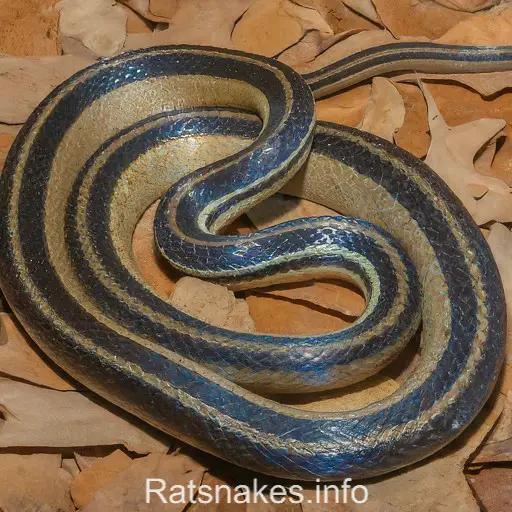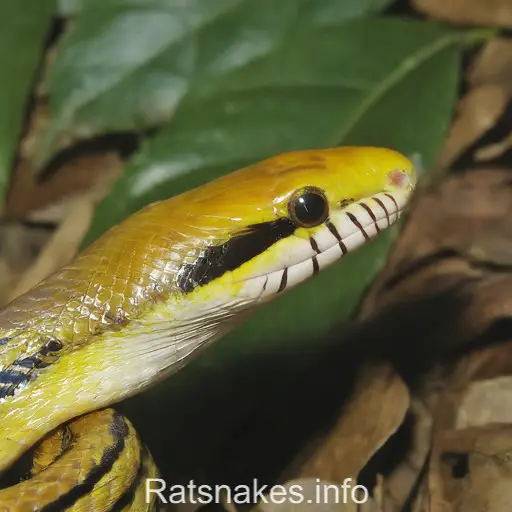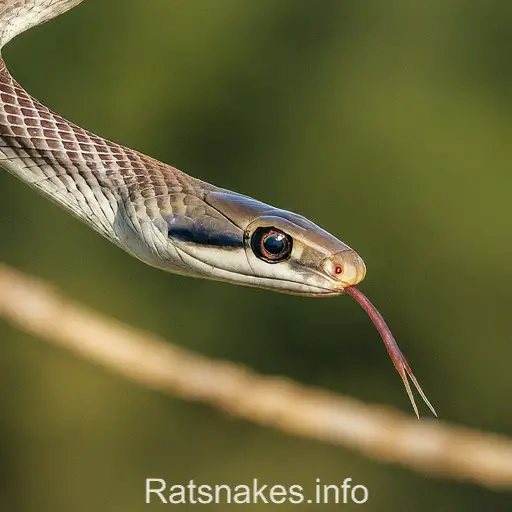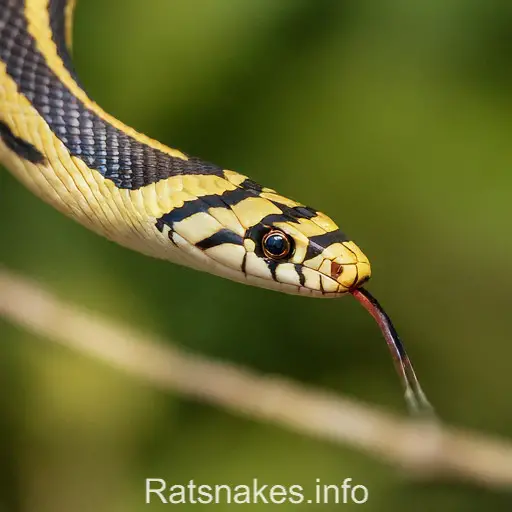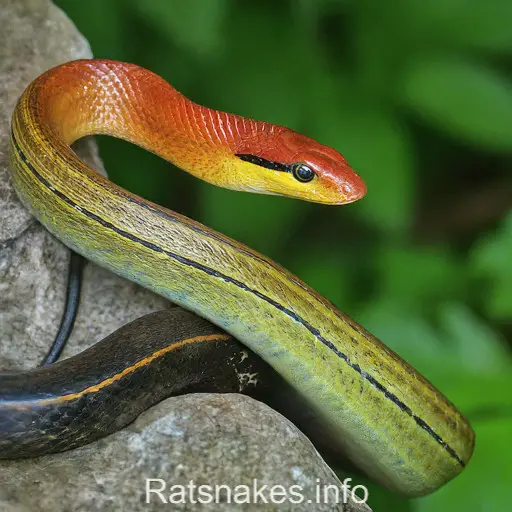
Are you ready to dive into the fascinating world of the Red Rat Snake, also known as Pantherophis guttatus? These striking reptiles are known for their vibrant red coloration and impressive hunting skills. Join us as we explore the unique characteristics and behaviors of these captivating creatures.
With their distinctive appearance and widespread distribution across North America, Red Rat Snakes have intrigued both researchers and reptile enthusiasts alike. From their preferred habitats to their dietary preferences, there’s so much to uncover about these remarkable serpents. Let’s embark on a journey to unravel the mysteries of the Red Rat Snake together.
Whether you’re a seasoned herpetologist or simply curious about the wonders of the natural world, our exploration of the Red Rat Snake promises to be an enlightening adventure. Stay tuned as we delve deeper into the intriguing world of Pantherophis guttatus and discover what makes these snakes truly stand out in the reptile kingdom.
Habitat of the Red Rat Snake
When it comes to Red Rat Snakes, they are highly adaptable creatures that can thrive in a variety of habitats. Here are some key points about their habitat:
- Diverse Environments: Red Rat Snakes are found in a wide range of habitats, including forests, fields, marshes, and rocky areas. This adaptability allows them to establish populations across various landscapes.
- Climate: These snakes are commonly found in regions with a temperate climate, where they can regulate their body temperature by basking in the sun or seeking shelter in underground burrows.
- Cover and Shelter: Red Rat Snakes seek out areas with ample cover and hiding spots, such as thick vegetation, piles of rocks, or abandoned burrows. These provide protection from predators and serve as ideal resting places.
- Water Sources: While not dependent on aquatic environments, Red Rat Snakes are often found near water sources, such as streams, ponds, or swamps, as these areas attract their prey, including rodents and amphibians.
- Human Habitats: Due to their adaptability, Red Rat Snakes can also be spotted in human-altered environments like agricultural fields, suburban neighborhoods, and even urban areas where suitable food and shelter are available.
- Seasonal Movements: These snakes may exhibit seasonal movements to find optimal conditions for feeding and breeding. They can cover considerable distances in search of suitable habitats.
Understanding the diverse habitats of Red Rat Snakes is crucial for conservation efforts and fostering coexistence with these fascinating reptiles.
Physical Characteristics
When it comes to Red Rat Snakes, their physical characteristics are remarkable and distinctive. Here are some key features to look out for:
- Coloration: They typically have a base color of orange to reddish-brown with dark blotches running down the length of their bodies.
- Size: These snakes can reach lengths of up to 6 feet, with males usually being slightly larger than females.
- Pattern: Their patterns vary, but they’re known for their signature saddle-shaped markings along their backs.
- Eyes: Red Rat Snakes have round pupils and keen eyesight that helps them hunt for prey.
In addition to these physical attributes, their slender bodies and smooth scales enable them to move with agility through a variety of habitats.
Diet and Feeding Habits
When it comes to diet, Red Rat Snakes predominantly feed on rodents such as mice, rats, and even small birds. Their hunting strategy involves constricting their prey before swallowing it whole. These snakes are known for their ambush hunting technique, patiently waiting for the right moment to strike.
Feeding habits of Red Rat Snakes are quite fascinating. They are opportunistic feeders, seizing the chance to consume any suitable prey that crosses their path. Being non-venomous, they rely on their constriction abilities to subdue their meal effectively.
In the wild, these snakes play a crucial role in controlling rodent populations, making them valuable assets in ecosystems. By maintaining a healthy balance in prey populations, Red Rat Snakes contribute to the overall health of their habitats, showcasing their significance in the food chain.
Reproduction and Life Cycle
- Red Rat Snakes typically mate in spring, with females laying 6-24 eggs in early summer.
- Incubation lasts around 60 days, with hatchlings emerging in late summer or early fall.
- Hatchlings are about 10-15 inches long and are independent from birth, feeding on small rodents and growing rapidly.
- These snakes reach sexual maturity at around 2-3 years of age, continuing the cycle of life.
| Reproduction Facts | Data |
|---|---|
| Number of eggs laid | 6-24 |
| Incubation period | 60 days |
| Hatchling length | 10-15 inches |
| Age of sexual maturity | 2-3 years |
Conservation Status
In terms of conservation, the Red Rat Snake is listed as Least Concern according to the International Union for Conservation of Nature (IUCN). This classification suggests that the species is not facing any immediate threat of extinction.
There are several factors contributing to the healthy population status of the Red Rat Snake:
- Wide Habitat Range: These snakes are found across a diverse range of habitats, from forests to farmlands, allowing for a broad distribution and population.
- Adaptability: Red Rat Snakes are adaptable creatures, able to thrive in various environments and climates, which enhances their chances of survival.
- Abundance of Prey: Their diet primarily consists of small rodents, which are usually abundant in the snakes’ habitats, ensuring a stable food source for the population.
Despite their current stable status, monitoring of populations and habitats is crucial to ensure the continued well-being of the Red Rat Snake. Conservation efforts typically focus on preserving their natural habitats and raising awareness about the importance of these snakes in their ecosystems.
Key Takeaways
- Red Rat Snakes are highly adaptable and can thrive in diverse habitats, including forests, fields, and human-altered environments.
- Physical Characteristics of Red Rat Snakes include vibrant coloration, size up to 6 feet, distinctive patterns, and keen eyesight for hunting.
- Diet and Feeding Habits: These snakes feed on rodents, birds, and use constriction to subdue prey, playing a vital role in controlling rodent populations.
- Reproduction and Life Cycle: Red Rat Snakes mate in spring, lay 6-24 eggs in summer, with hatchlings being independent from birth and reaching sexual maturity in 2-3 years.
- Conservation Status: Red Rat Snakes are classified as Least Concern, thanks to their wide habitat range, adaptability, and abundant prey. Monitoring populations and habitats is crucial for their continued well-being.
Conclusion
The Red Rat Snake’s unique characteristics and ecological significance make it a fascinating species to study and protect. With its adaptable nature and diverse habitat range, these snakes play a vital role in maintaining ecosystem balance. By focusing on conservation efforts that prioritize monitoring populations and preserving their natural habitats, we can ensure the continued well-being of Red Rat Snakes for future generations. It’s essential to raise awareness about the importance of these snakes in our ecosystems and work together to safeguard their existence. Let’s continue to appreciate and protect these remarkable creatures for the benefit of our planet.

